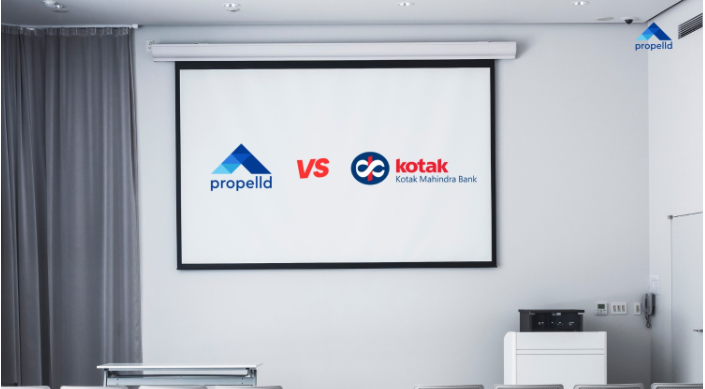Education loans have become a lifeline for millions of Indian students pursuing higher education. However, when these loans become difficult to repay, they can turn into Non-Performing Assets (NPAs), creating significant financial challenges for borrowers and their families. NPAs represent a critical concern in India's banking sector, with education loans accounting for a substantial portion of stressed assets.
Understanding NPA in education loans is crucial for students and parents managing repayments, as it directly impacts credit scores, future borrowing capacity, and overall financial health. This comprehensive guide will help you navigate the complexities of education loan NPAs and provide actionable solutions.
What is NPA in Education Loan?
A Non-Performing Asset (NPA) in education loans occurs when borrowers fail to make payments for 90 consecutive days or more. Once an education loan crosses this threshold, banks classify it as an NPA, triggering various consequences for the borrower.
Types of NPAs in Education Loans
Understanding the different classifications of NPAs helps borrowers gauge the severity of their situation and potential recovery options:
- Sub-Standard Assets: Loans overdue for 90 days to 12 months. These accounts still have potential for recovery with proper intervention and are often the easiest to negotiate settlements for.
- Doubtful Assets: Loans overdue for more than 12 months but less than 24 months. Recovery becomes increasingly challenging at this stage, and banks may be more willing to consider substantial settlement discounts.
- Loss Assets: Loans overdue for more than 24 months, where recovery is considered nearly impossible by the lending institution. These accounts often see the highest settlement discounts but also carry the most severe credit implications.
How Banks Evaluate NPA Risk in Education Loans
Banks typically evaluate education loan applications based on specific criteria, and understanding these factors helps predict NPA risk:
Academic Performance: Minimum marks in qualifying examinations - students with higher academic scores typically have better repayment records.
Course and Institution: Preference for recognized universities and professional courses with established placement records.
Family Income: Annual income requirements varying by loan amount - higher family income reduces NPA risk.
Entrance Exam Scores: For professional courses and premier institutions - competitive scores often correlate with better job prospects.
Co-applicant Financial Stability: Income and employment status of parents or guardians plays a crucial role in loan approval and subsequent repayment success.
Factors Leading to NPA Classification
An education loan account becomes eligible for NPA classification when specific conditions are met:
- Monthly EMIs remain unpaid for 90+ consecutive days
- Interest payments are consistently missed
- The account shows irregular payment patterns over extended periods
- Communication with the borrower becomes difficult or impossible
- Borrower fails to respond to bank notices and recovery efforts
Premier Institutes vs. Regular Colleges
The choice of educational institution significantly impacts NPA rates and recovery prospects. Loans for premier institutions like IITs, IIMs, and top-tier medical colleges tend to have lower NPA rates due to several factors:
- Premier Institute Advantages: Premier institutions offer better placement opportunities with higher salary packages and strong alumni networks that facilitate job placements. Industry recognition leads to faster career progression, often justifying higher loan amounts through better earning potential.
- Regular College Challenges: Regular colleges face limited job prospects and lower starting salaries that affect EMI affordability. Weaker industry connections and higher competition for available positions contribute to increased NPA risk.
Causes of NPA in Education Loans
Understanding the root causes helps students and families prepare better strategies to avoid NPA situations.
- Employment Challenges: The most common cause is unemployment or underemployment after graduation. Many graduates struggle to find jobs matching their qualifications or salary expectations, particularly in saturated job markets.
- Economic Downturns: Market recessions can lead to widespread job losses or salary cuts, making EMI payments difficult even for employed graduates.
- Family Financial Crisis: Unexpected medical expenses, death of the primary earning member, or business losses can severely disrupt the family's repayment capacity.
- Course-Related Issues: Some courses may not provide adequate job opportunities or the promised career prospects, leading to graduates struggling with repayment despite completing their education.
- Skill-Market Mismatch: Rapid changes in industry requirements often leave graduates with outdated skills, affecting their employability and earning potential.
Impact of NPA Status on Students
When an education loan attains NPA status, the consequences extend far beyond just missed payments. The impact creates a ripple effect that can affect a student's financial future for years to come.
- Credit Score Damage: CIBIL scores drop significantly, often below 600, severely limiting access to future credit at reasonable rates
- Legal Action: Banks may initiate recovery proceedings, asset seizure, and legal notices creating additional stress and costs
- Future Loan Rejection: Difficulty securing personal, home, or business loans for up to seven years, limiting major life opportunities
- Family Impact: Co-applicants and guarantors face similar credit damage and legal implications affecting entire family finances
- Employment Issues: Some employers check credit scores during hiring, potentially affecting job prospects in financial services
- Social Stigma: Family reputation may suffer due to legal notices and recovery actions, creating psychological stress
Education Loan NPA Settlement & Repayment
Successfully resolving NPA status requires understanding bank processes and negotiation strategies that can lead to favorable outcomes.
Bank Settlement Approaches
Banks follow a structured NPA resolution process beginning with initial recovery efforts through phone calls, emails, and personal visits to understand the borrower's situation. If these fail, formal legal notices are issued within 30-60 days, followed by settlement negotiations offering one-time payment options at 40-70% of the outstanding balance depending on account classification.
As a last resort, banks may pursue asset recovery through liquidation of securities or guarantor assets, though this is less common with education loans due to limited collateral requirements.
Negotiation Strategies
Documentation: Maintain comprehensive records of all communications, financial hardships, medical emergencies, or unemployment periods that contributed to the default.
Professional Help: Consider engaging experienced loan settlement companies or financial advisors who understand bank policies and can negotiate more effectively.
Government Schemes: Explore schemes like the Credit Guarantee Fund Trust for Micro and Small Enterprises (CGTMSE) for assistance, though options are limited for individual education loans.
Restructuring Options: Request loan restructuring, extended tenure, or moratorium periods before the account reaches NPA status, as prevention is more effective than cure.
How to Remove NPA Status from Student Loan?
Many students successfully clear their NPA status through negotiated settlements or structured repayment plans. The earlier you address the issue, the better your chances of securing favorable terms from the bank.
1. Calculate Total Dues: Determine the complete outstanding amount including principal, interest, penalties, and legal charges. Banks often provide detailed statements upon request.
2. Negotiate Settlement: Engage with the bank's recovery department to discuss one-time settlement options. Be prepared to demonstrate financial hardship and provide supporting documentation.
3. Payment Execution: Make the agreed payment through proper banking channels, ensuring you receive official receipts and transaction confirmations.
4. Obtain Clearance Certificate: Ensure the bank provides written confirmation of loan closure, clearly stating that the account is settled and closed with no further dues.
5. Credit Bureau Updates: Follow up with the bank to ensure credit bureaus (CIBIL, Experian, Equifax) update the account status to reflect the settlement, which may take 30-45 days.
Prevention Tips: How Students Can Avoid NPA Status?
Preventing NPA status is always preferable to resolving it after the fact. Proactive measures can save significant financial and emotional stress.
- Create realistic post-graduation budgets factoring in job search time and initial lower salaries
- Maintain an emergency fund equivalent to 3-6 months of EMI payments for unexpected challenges
- Choose courses and skills with strong job market demand after researching employment prospects
- Continuously upgrade skills through online courses, certifications, and practical experience
- Keep lenders regularly informed about employment status and any financial challenges
- Contact the bank immediately when facing repayment difficulties for better accommodation options
Government Resources for Students with Education Loan NPAs
While government-specific NPA resolution programs are limited, several resources can provide assistance and guidance to struggling borrowers.
- Vidya Lakshmi Portal: Comprehensive guidance on education loans and grievance redressal mechanisms
- Skill Development Programs: Skill India, PMKVY, and state-level programs to improve employability
- Banking Ombudsman: Formal grievance mechanism for complaints against unfair bank recovery practices
- Legal Aid Services: Government assistance for borrowers facing aggressive recovery actions or legal proceedings
- RBI Guidelines: Fair recovery practice regulations that protect borrowers from harassment
Managing education loan NPAs requires understanding, prompt action, and strategic planning. Students should prioritize regular communication with lenders and seek professional assistance when needed. Remember that NPA status is not permanent – with proper planning, borrowers can resolve these issues and restore their financial standing.
The key to avoiding education loan NPAs lies in realistic financial planning, career-focused education choices, and maintaining open communication with lending institutions. Early intervention is crucial, as addressing repayment challenges before NPA status provides better outcomes for all parties involved.













.svg)